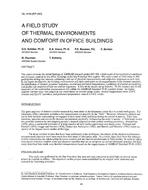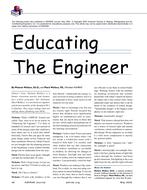Natural convection in a two-cell enclosure with a door has been investigated comparing the results of a CFD simulation to experimental data available in the literature. The continuity constraint method (CCM), implemented via a finite-element weak statement, was employed to solve the unsteady three-dimensional Navier-Stokes equations for a buoyant, incompressible laminar flow. The CFD results predicted essentially all experimentally observed features of the flow field, including the vertical plume in the cold zone, boundary-layer flows along the heated and cooled walls, and the hot zone’s horizontal jet. Vertical temperature stratification predictions were in agreement with the experimental data in the cold zone; however, the measured hot-zone stratification was not well predicted by the CFD simulation. Concludes with an assessment of factors affecting the CFD results and comparisons to experimental data.
KEYWORDS: properties, natural convection, comparing, experiment, jets, air flow, air movement, vertical, walls, heating, heat load, cooling load, air jets, temperature stratification, measuring, models
Citation: Symposium, ASHRAE Trans. 1994, Vol.100, Part 2
Product Details
- Published:
- 1994
- File Size:
- 1 file , 1.5 MB
- Product Code(s):
- D-17527


